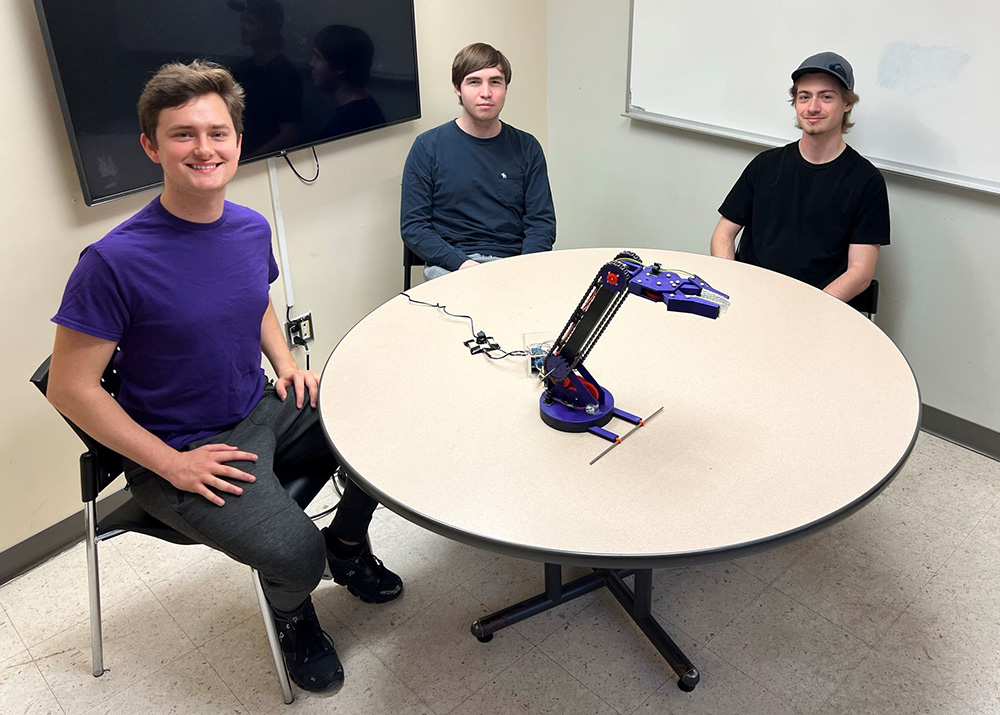A team of students in a first-year course received “all possible marks and bonus marks” with a robotic arm they built for an Engineering Practice assignment.
Part of the common first-year curriculum, APSC 100: Engineering Practice “provides an opportunity to apply engineering science and mathematics content in situations emulating professional practice.” For the fall term, teams of four or five students were tasked to articulate their process to design and develop a robotic arm.
This team went ahead and built a fully functional one.
“We had to make one that had a gripping system with a sensor to prevent the gripper from closing too much,” says David Lafleur. “It had to lift up 25 centimetres and we had to use the motors that were given. So that meant we had to design a gear box, a pretty strong one. And also it had to be able to rotate on the base.”
In addition to Lafleur, the team consisted of Antoine Chevalier, Jacob Chisholm, and Christian Vandermeer. All four entered first-year study in one of the Queen’s Engineering direct entry programs: Vandermeer is in the Mechatronics and Robotics Engineering (MRE) program, while Chevalier, Chisholm, and Lafleur are all students in the Computer Engineering or Electrical Engineering - Innovation (CEEE-I) Stream program (CEEE-I).
The team members’ individual hobbyist experiences prior to enrolling at Queen’s greatly influenced their capacity to rise to this challenge.
“I’ve been competing in competitive robotics for four years,” says Chisholm. “I wouldn’t necessarily say this was a walk in the park, compared to the scope of other projects I’ve worked on in the past, and the projects that I was working on while working on this…”
“—and I had some 3D printing experience,” added Lafleur, “so I knew how to manufacture some parts. I’d had some 3D design experience as well.”
The team explained that the assignment was, for the most part, report driven. It was an opportunity for first-year students to explore the application of their coursework in a simulated real-world context.
For this team, the physical assembly of the arm was fun, and it made the learning more immersive.
“I learned a lot doing this,” says Lafleur, “so I think building the arm made the experience better.”

Photo: (L-R) David Lafleur, Antoine Chevalier, and Jacob Chisholm with their robotic arm. Not pictured: Christian Vandermeer.